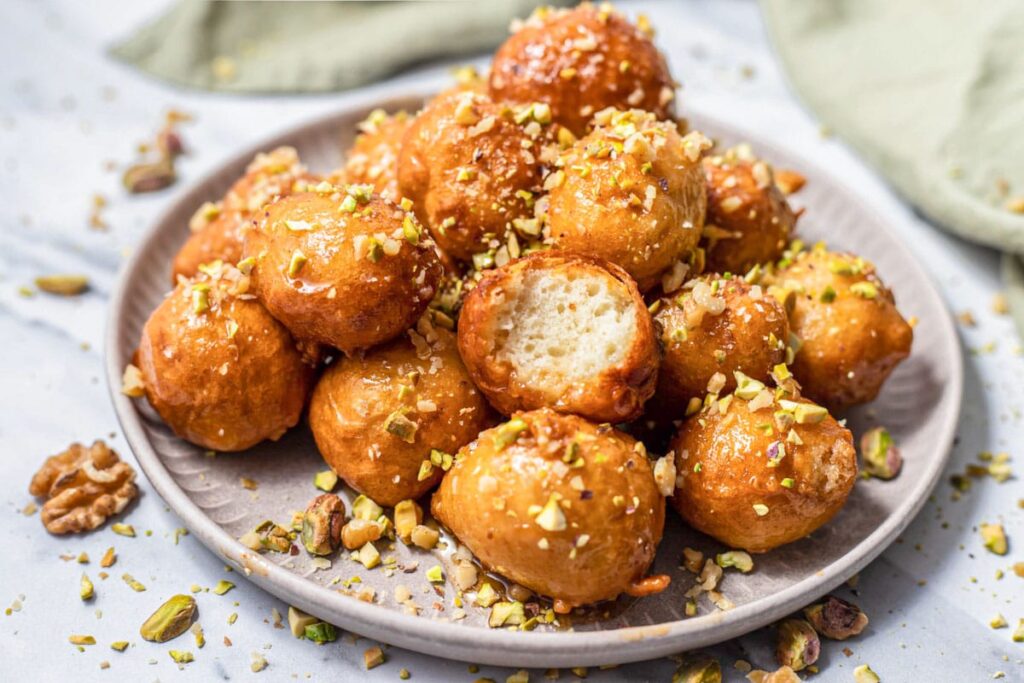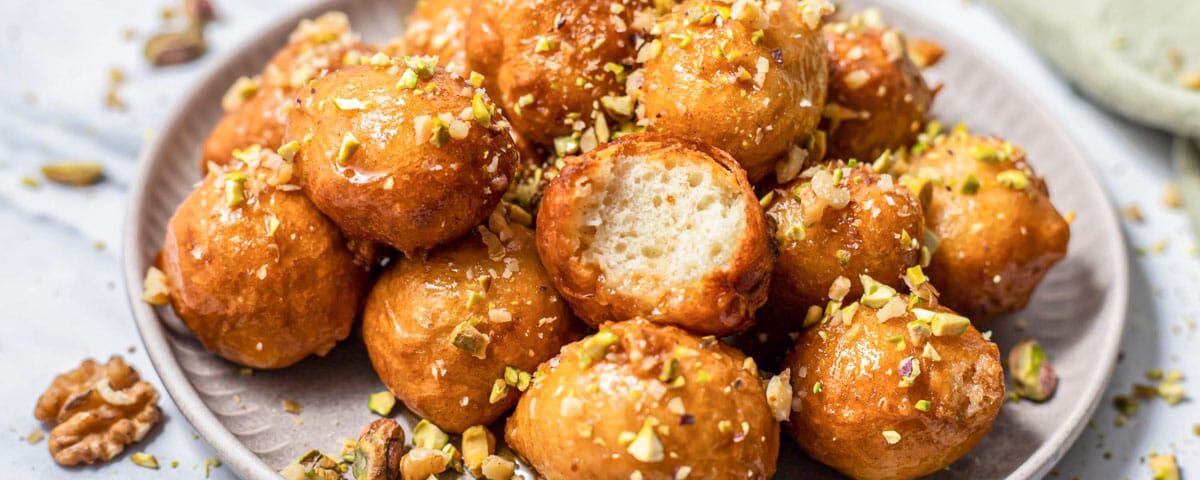Loukoumades A Delectable Journey into Greek Doughnut Delights

Avgolemono Soup: A Greek Delight

Fasolada: A Nutritious and Delicious Greek Bean Soup
Loukoumades A Delectable Journey into Greek Doughnut Delights
If you’re a dessert enthusiast with a penchant for exploring global cuisines, then you’ve likely heard of Loukoumades. These delightful Greek doughnut balls have a rich history and an even richer flavor profile, adorned with honey and sprinkled often with cinnamon or nuts. Not only are they a treat for the taste buds, but they also carry an irreplaceable cultural heritage that dates back centuries.

The History and Origin of Loukoumades
Loukoumades are deeply embedded in ancient Greek culture, and their origins can be traced back to the first Olympic Games in 776 BC. Ancient Greek athletes were rewarded with these golden, deep-fried honey puffs—a testament to their legendary status.
The word “loukoumades” is derived from the Turkish “lokma,” which translates to “morsel” or “mouthful,” indicating the perfect bite-sized nature of these delectable treats. Over the centuries, they evolved and spread throughout the Mediterranean, with each culture adding unique twists.
Ingredients Needed for Traditional Loukoumades
Before diving into the cooking process, let’s break down the essential ingredients required to make traditional loukoumades. Simplicity is key here, making it accessible for even novice bakers.
Main Ingredients
- All-Purpose Flour: The foundation of the dough, giving it structure.
- Yeast: To help the dough rise and achieve a fluffy texture.
- Water: For hydrating the dough mixture.
- Salt: To balance the sweetness and enhance flavors.
- Olive Oil: Used for frying, imparting a subtle richness.
Toppings
- Honey: The traditional sweetener, drizzled generously over the fried dough balls.
- Cinnamon: A sprinkle of this aromatic spice adds a warm, comforting flavor.
- Chopped Nuts: Often walnuts or pistachios, for a crunchy contrast.
Step-by-Step Recipe for Loukoumades
Creating loukoumades at home is remarkably straightforward, requiring just a few techniques to master.
Step 1: Prepare the Dough
- Mixing the Ingredients: In a large bowl, combine 2 cups of all-purpose flour, 2 teaspoons of yeast, and a pinch of salt.
- Adding the Water: Gradually add 1 ¼ cups of lukewarm water, stirring continuously to create a smooth, sticky dough.
- Resting the Dough: Cover the bowl with a damp cloth and let it sit in a warm place for 1-2 hours, allowing the yeast to activate and the dough to double in size.
Step 2: Frying the Dough
- Heating the Oil: In a deep frying pan or pot, heat 4 cups of olive oil over medium heat until it reaches 350°F (175°C).
- Forming the Dough Balls: With a tablespoon, scoop small portions of the dough and carefully drop them into the hot oil. Fry in batches to avoid overcrowding.
- Frying to Perfection: Fry the dough balls until they turn golden brown and puff up, roughly 2-3 minutes per batch. Use a slotted spoon to transfer them to a paper towel-lined tray to drain excess oil.
Step 3: Adding the Toppings
- Drizzling the Honey: Arrange the warm loukoumades on a serving platter and generously drizzle with honey.
- Sprinkling with Cinnamon and Nuts: Add a sprinkle of ground cinnamon and a handful of chopped nuts to complete the dish.
Variations and Contemporary Twists
While the traditional loukoumades are undeniably delicious, modern culinary enthusiasts have experimented with various adaptations to cater to diverse palates.
Chocolate Loukoumades
For the chocolate lovers, replace the honey drizzle with melted chocolate or Nutella, creating a decadent dessert reminiscent of churros but with a Greek twist.
Savory Loukoumades
Who said loukoumades must be sweet? An innovative savory version can be achieved by incorporating herbs like rosemary or thyme into the dough and serving them with a garlic-infused olive oil dipping sauce or a feta cheese sprinkle.
Cultural Significance and Modern Trends
Loukoumades may have ancient roots, but they have seamlessly transitioned into contemporary times, becoming a beloved treat at Greek festivals, food markets, and even trendy urban dessert spots.
Festive Celebrations
In Greece, loukoumades are indispensable during festive occasions like Christmas and Easter. They symbolize joy and indulgence, bringing people together to share in the simple pleasure of good food.
Street Food Revival
The global street food movement has also embraced loukoumades, with food trucks and stalls offering these bite-sized delights in various imaginative forms. Whether you’re exploring a bustling night market or a food festival, chances are you’ll stumble upon a stall serving these golden treats.
Health Considerations
As with any fried dessert, moderation is key. While loukoumades are indulgent, there are ways to enjoy them more mindfully.
Baking Instead of Frying
For a slightly healthier version, consider baking the dough balls instead of frying. While they may not achieve the same crispy exterior, they will still be light and airy with the same delightful honey coating.
Healthier Oils
Opting for healthier frying oils like coconut oil or avocado oil can reduce the unhealthy fats typically associated with deep-frying, without compromising on flavor.
Conclusion
Loukoumades are more than just a dessert; they are a narrative of ancient traditions, cultural heritage, and culinary artistry. Whether you’re making these honey-drenched doughnut balls at home or sampling them from a street vendor, the experience is nothing short of delightful.
From their ancient origins to modern-day adaptations, loukoumades continue to captivate food enthusiasts around the world. So why not embark on this delicious journey yourself? With a simple recipe and a spirit of culinary adventure, anyone can bring a taste of Greece into their own kitchen.
Feel Free to Share Your Creations!
Have you tried making loukoumades? Share your experience and any creative twists you’ve added! The world of culinary exploration is vast, and every version adds to the rich tapestry of this delightful dessert.
Enjoy your sweet journey to Greece, one golden bite at a time!


